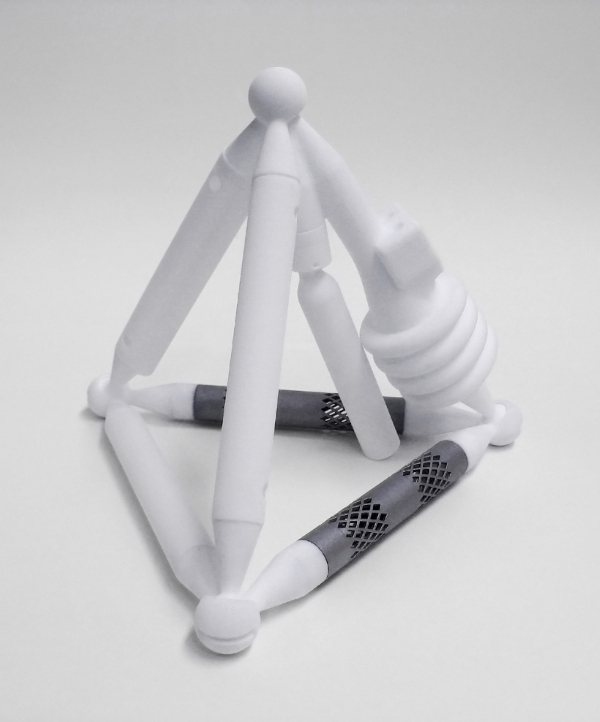Genetic Robots made with 3D printing without a human designer
The German high tech research Fraunhofer-Institut has just unveiled its Genetic Robots. The robots are made by using genetic algorithms that come up with the optimal robot shape and form without the involvement of any human designer. The optimal form is decided based on a physics engine that takes into account the tasks and terrain and then designs the robot accordingly. The robots are made of ball and socket joints and connecting tubes and can change shape depending on the required tasks. The resulting robot is then 3D printed.
This is nothing short of the future of design. By looking at the fitness of a design before the robot is made and by individually designing and 3D printing only the best suited designs, more optimal designs can be produced. No longer do designs have to be “for all terrains” or for all uses but they can suffice for a single task. In effect you have disposable highly specialized robots. With Moore’s law and other technology accelerators in effect this commodity approach has long seemed to me to be more fruitful in the long run than making some kind of humanoid “mega Asimo” robot that can do everything.
Removing the human designer from the equation has profound implications for design. What will human designers do? Is this just a fad or a single application or will human designers be pushed back from more and more products as genetic algorithms combined with physics engines take over? Will this kind of evidence based automatic design be able to make beautiful things? Will it be able to, through number crunching, come to design solutions that work in many areas of our world? And how well will designs that have been simulated beforehand work in the real world?
I think that this is an astounding project by the Fraunhofer-Institut that will really show us the way forward in design, manufacturing and 3D printing. One of the largest issues with 3D printing is the lack of design skills and lack of inspiration that many people experience. They want to make something that is perfect for them but do not know how. Will machines fill the gap and design for us? Also, John Connor, are you out there?
CORRECTION: as pointed out on Boing Boing, I omitted to mention that the Fraunhofer Institut”s work is based on research conducted by H. Lipson and J. B. Pollack and their GOLLEM project. You can read about that here.
Recommended Articles
No related posts.



